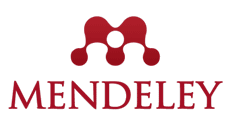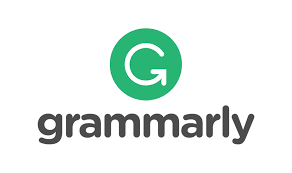Utilization of YouTube to Improve Learning Outcomes in Madrasah
DOI:
https://doi.org/10.57176/jn.v4i1.120Keywords:
YouTube, Islamic Education, Interactive LearningAbstract
Penelitian ini berfokus pada penggunaan YouTube sebagai platform pembelajaran untuk meningkatkan hasil belajar siswa di Madrasah. Tujuan utama penelitian ini adalah untuk mengevaluasi efektivitas video pembelajaran interaktif dalam memperdalam pemahaman siswa terhadap materi pelajaran, serta untuk mengidentifikasi tantangan dan peluang dalam integrasi teknologi ini dalam kurikulum pendidikan Islam. Metode penelitian yang digunakan adalah metode kualitatif dengan pendekatan studi kasus, melibatkan observasi langsung, wawancara mendalam dengan guru dan siswa, serta analisis dokumen terkait. Hasil penelitian menunjukkan bahwa penggunaan YouTube sebagai alat bantu pembelajaran dapat meningkatkan keterlibatan dan motivasi belajar siswa. Video pembelajaran yang disajikan secara interaktif membantu siswa lebih memahami konsep-konsep pelajaran dengan lebih baik, sejalan dengan teori konstruktivisme. Implikasi penelitian ini menekankan pentingnya pengembangan keterampilan teknologi bagi guru dan integrasi yang lebih sistematis dari platform digital dalam kurikulum pendidikan Islam untuk mendukung pembelajaran yang lebih efektif dan relevan. Penelitian ini memberikan kontribusi signifikan dalam literatur pendidikan digital, khususnya dalam konteks pendidikan agama, serta membuka peluang untuk penelitian lanjutan yang lebih komprehensif.
______________________________________________________________________________________
This research focuses on using YouTube as a learning platform to improve student learning outcomes in Madrasah. The main aim of this research is to evaluate the effectiveness of interactive learning videos in deepening students' understanding of the subject matter and identify challenges and opportunities in integrating this technology into the Islamic education curriculum. The research method used is a qualitative case study involving direct observation, in-depth interviews with five teachers and 2 students, and analysis of related documents. The research results show that using YouTube as a learning aid can increase student engagement and learning motivation. Learning videos presented interactively help students understand lesson concepts better, which is in line with constructivism theory. The implications of this research emphasize the importance of developing technological skills for teachers and more systematic integration of digital platforms in the Islamic education curriculum to support more effective and relevant learning. This research made a significant contribution to the literature on digital education, particularly in the context of religious education, and opens up opportunities for more comprehensive further research.
References
Adeoye-Olatunde, O. A., & Olenik, N. L. (2021). Research and scholarly methods: Semi-structured interviews. Journal of the American College of Clinical Pharmacy, 4(10), 1358-1367. https://doi.org/10.1002/jac5.1440
Ansori, A., Hefniy, H., Baharun, H., Agus, A. H., & Zaini, A. W. (2023). Method of Communications Islamic Educational Institutions in Building Branding Image Symbolic Interaction Studies. Managere: Indonesian Journal of Educational Management, 5(3), 280-293. https://doi.org/10.52627/ije.4.3.199
Chohan, S. R., & Hu, G. (2022). Strengthening digital inclusion through e-government: Cohesive ICT training programs to intensify digital competency. Information Technology for Development, 28(1), 16-38. https://doi.org/10.1080/02681102.2021.1889336
Chuanchen, C. (2023). Cultivating Cultural Synergy: Unifying Boarding Schools, Local Wisdom, and Authentic Islamic Values for the Enhancement of Islamic Identity. Managere: Indonesian Journal of Educational Management, 5(2), 187-197. https://doi.org/10.52627/ije.5.2.187
Creswell, J. W., & Guetterman, T. C. (2020). Educational Research: Planning, Conducting, and Evaluating Quantitative and Qualitative Research (6th ed.). Pearson.
Erciyes, E. (2020). Reflections of a social constructivist on teaching methods. European Journal of Educational Sciences, 7(4), 16-26. https://doi.org/10.19044/ejes.v7no4a2
Farag, M., Bolton, D., & Lawrentschuk, N. (2020). Use of YouTube as a resource for surgical education—clarity or confusion. European Urology Focus, 6(3), 445-449. https://doi.org/10.1016/j.euf.2019.07.012
Hasanah, I., & Hefniy, H. (2023). Strengthening Brand Identity: Embracing Local Wisdom through Character Education Management. Indonesian Journal of Education and Social Studies, 2(2), 83-94. https://doi.org/10.52627/ijess.2.2.83
Kaliappen, N., Ismail, W. N. A., Ghani, A. B. A., & Sulisworo, D. (2021). Wizer.me and Socrative as Innovative Teaching Method Tools: Integrating TPACK and Social Learning Theory. International Journal of Evaluation and Research in Education, 10(3), 1028-1037. https://doi.org/10.11591/ijere.v10i3.21636
Kim, J., & Kim, G. (2020). The Effectiveness of Using Youtube Videos to Enhance Efl Students’ Motivation and Engagement. Journal of Educational Technology & Society, 23(3), 1-14. https://www.jstor.org/stable/26915406
Memon, N. A., Chown, D., & Alkouatli, C. (2021). Descriptions and enactments of Islamic pedagogy: Reflections of alumni from an Islamic Teacher Education Programme. Pedagogy, Culture & Society, 29(4), 631-649. https://doi.org/10.1080/14681366.2020.1807398
Mezmir, E. A. (2020). Qualitative data analysis: An overview of data reduction, data display, and interpretation. Research on Humanities and Social Sciences, 10(21), 15-27. https://doi.org/10.7176/rhss/10-21-02
Mora, H., Signes-Pont, M. T., Fuster-Guilló, A., & Pertegal-Felices, M. L. (2020). A collaborative working model for enhancing the learning process of science & engineering students. Computers in Human Behavior, 103, 140-150. https://doi.org/10.1016/j.chb.2019.09.013
Ngoasong, M. Z. (2022). Curriculum adaptation for blended learning in resource-scarce contexts. Journal of Management Education, 46(4), 622-655. https://doi.org/10.1177/10525629211068958
Norman, E., Paramansyah, A., & Zaini, A. W. (2024). The Influence of Inspiring Leadership and Religiosity on Teacher Performance. Al-Tanzim: Jurnal Manajemen Pendidikan Islam, 8(2), 438-450. https://doi.org/10.1234/jmpi.v8i2.123
Núñez-Canal, M., de Obesso, M. D. L. M., & Pérez-Rivero, C. A. (2022). New Challenges in Higher Education: A Study of The Digital Competence of Educators in Covid Times. Technological Forecasting and Social Change, 174, 121270. https://doi.org/10.1016/j.techfore.2021.121270
Pinto, M., Caballero Mariscal, D., & Segura, A. (2022). Experiences of Information Literacy and Mobile Technologies Amongst Undergraduates in Times of COVID. A qualitative approach. Aslib Journal of Information Management, 74(2), 181-201. https://doi.org/10.1108/AJIM-09-2021-0267
Pratama, S. H. H., Arifin, R. A., & Widianingsih, A. W. S. (2020). The Use of Youtube as a Learning Tool in Teaching Listening Skill. International Journal of Global Operations Research, 1(3), 123-129. https://doi.org/10.1234/ijgor.v1i3.123
Priya, A. (2021). Case Study Methodology of Qualitative Research: Key Attributes and Navigating the Conundrums in Its Application. Sociological Bulletin, 70(1), 94-110. https://doi.org/10.1177/00380229211012343
Qureshi, M. A., Khaskheli, A., Qureshi, J. A., Raza, S. A., & Yousufi, S. Q. (2023). Factors Affecting Students’ Learning Performance Through Collaborative Learning and Engagement. Interactive Learning Environments, 31(4), 2371-2391. https://doi.org/10.1080/10494820.2021.1947287
Rashid, T., & Asghar, H. M. (2016). Technology Use, Self-Directed Learning, Student Engagement and Academic Performance: Examining the Interrelations. Computers in Human Behavior, 63, 604-612. https://doi.org/10.1016/j.chb.2016.05.084
Salam, M., & Farooq, M. S. (2020). Does Sociability Quality of Web-Based Collaborative Learning Information System Influence Students’ Satisfaction and System Usage?. International Journal of Educational Technology in Higher Education, 17(1), 26. https://doi.org/10.1186/s41239-020-00206-6
Voon, X. P., Wong, L. H., Looi, C. K., & Chen, W. (2020). Constructivism-Informed Variation Theory Lesson Designs in Enriching and Elevating Science Learning: Case Studies of Seamless Learning Design. Journal of Research in Science Teaching, 57(10), 1531-1553. https://doi.org/10.1002/tea.21652
Yassine, S. B., & Najmi, A. (2020). An Educational Youtube Video Analysis System. Education and Information Technologies, 25(5), 4045-4062. https://doi.org/10.1007/s10639-020-10143-3.
Downloads
Published
How to Cite
Issue
Section
License
Copyright (c) 2024 Boiman, Ahmad Aziz Fanani, Imam Mashuri

This work is licensed under a Creative Commons Attribution-ShareAlike 4.0 International License.
You are free to:
- Share — copy and redistribute the material in any medium or format for any purpose, even commercially.
- Adapt — remix, transform, and build upon the material for any purpose, even commercially.
- The licensor cannot revoke these freedoms as long as you follow the license terms.
Under the following terms:
- Attribution — You must give appropriate credit , provide a link to the license, and indicate if changes were made . You may do so in any reasonable manner, but not in any way that suggests the licensor endorses you or your use.
- ShareAlike — If you remix, transform, or build upon the material, you must distribute your contributions under the same license as the original.
- No additional restrictions — You may not apply legal terms or technological measures that legally restrict others from doing anything the license permits.
Notices:
You do not have to comply with the license for elements of the material in the public domain or where your use is permitted by an applicable exception or limitation .
No warranties are given. The license may not give you all of the permissions necessary for your intended use. For example, other rights such as publicity, privacy, or moral rights may limit how you use the material.
















